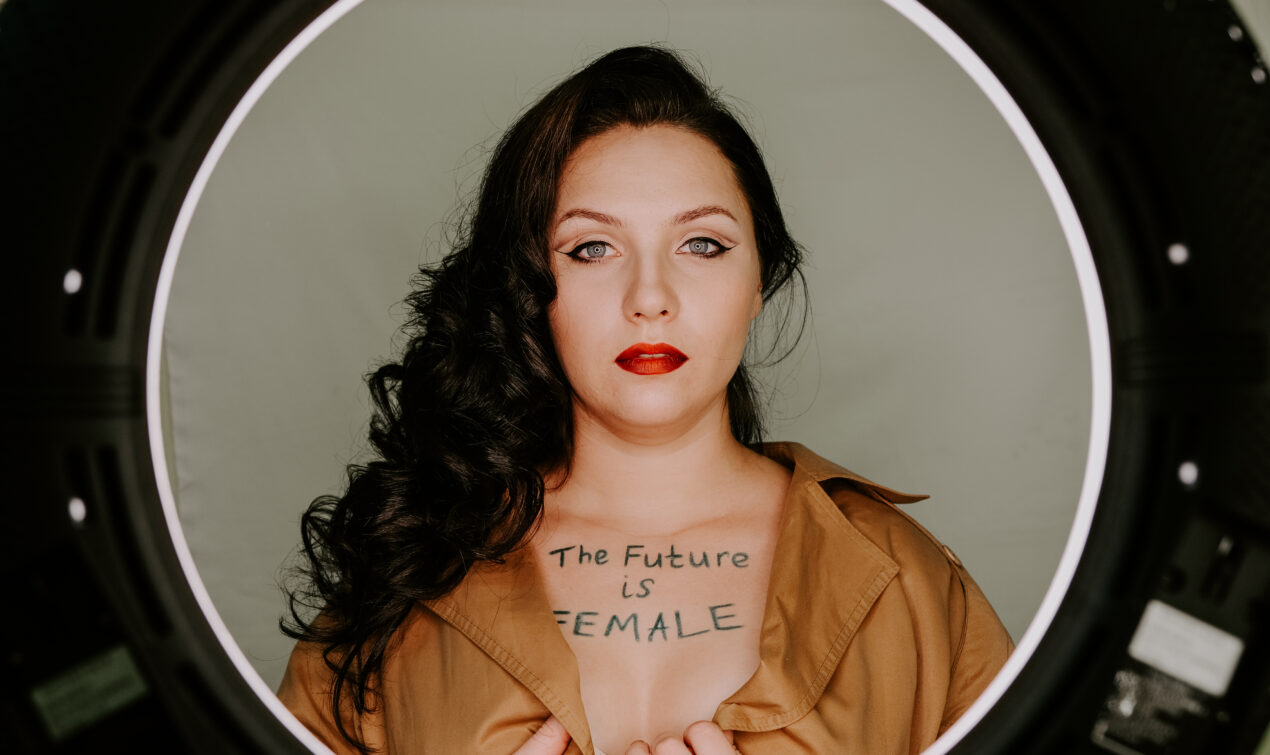Let’s Get Back To Burning Bras: When the modern-day world continues to stagnate women’s rise to equality, action is the best response.
Sexism is prejudice or discrimination based on sex or gender, especially against women and girls.
Sexism is to women what oxygen is to air. In other words, it’s a very real part of our survival. Whether men refer to the biblical definition of a “woman’s place” or women just got too comfortable with the constraints (aka vices) placed upon us because we were to have but one job–have children and be a dutiful wife–the gender inequalities are very, very stark. This week we look at the many explorations of how modern society continues to send messages of sexism and oppression through crutches like religion, politics and history of sexism and how we fight it.
In a fascinating paper by Gina Masequesmay, Professor of Asian American Studies at CSUN, she writes. “Although its origin is unclear, the term sexismemerged from the ‘second-wave’ feminism of the 1960s through the ’80s and was most likely modeled on the civil rights movement’s term racism(prejudice or discrimination based on race). Sexism can be a belief that one sex is superior to or more valuable than another sex.
It imposes limits on what men and boys can and should do and what women and girls can and should do … Sexism in a society is most commonly applied against women and girls. It functions to maintain patriarchy, or male domination, through ideological and material practices of individuals, collectives, and institutions that oppress women and girls on the basis of sex or gender. Such oppression usually takes the forms of economic exploitation and social domination. Sexist behaviours, conditions, and attitudes perpetuate stereotypes of social (gender) roles based on one’s biological sex. A common form of socialization that is based in sexist concepts teaches particular narratives about traditional gender roles for males and females.”
In this context, we want to address sexism as it relates to those who identify as female. Since the dawn of time, women have been treated like second-class citizens with very few exceptions. Human history—in America and around the world—teaches us that the vision of power and strength is male and the female is sensual and nurturing. Women really saw that play itself out in the 1950s when advertisements would actually say things such as, “How to train your wife to serve you” … (Oh, we wish we were kidding), and being objectified and seeming pleasing to a man’s eye was the measure of our worth.

In fact, while yes the 1950s were the epitome of gorgeous fashion, it was also the era of severely oppressed women. Our jobs were to cook and clean, raise the children, and if we were to join the workforce, we were “intended” for sewing and secretarial positions. While again, there are exceptions, it was—and still is—rare that a woman is offered the job over a man regardless of qualifications and experience. The old mindset of a woman’s place hasn’t changed all that much in a man’s mind, which is unfortunate since, in our mind, a woman’s place is to rule the world!
Fast forward to the late 60s when women were burning bras as a signatory move that we were done being held down by the man—figuratively and literally. A movement in history that led to women in education, women running businesses and women no longer allowing any male figure or oppressive government ideal to hold us down. But that only went so far. As women started to become active participants in the job market, steadily contributing to the rise in the economy, the moment they became pregnant, the discrimination resurfaced.
The wage gap for many women of color is not only wider than the overall gender wage gap, but it is also closing more slowly.
AAUW Research & Data

When sexism in the workplace rears its head, you can be sure the experiences for working mothers, let alone pregnant ones are less than ideal. Baylor University, in association with American Psychological Association (APA), is conducting studies revealing that over the last decade, more than 50,000 pregnancy discrimination claims were filed in the United States (United States Equal Employment Opportunity Commission [U.S. EEOC], 2018a). There is limited research on the stress caused by the discrimination against pregnant mothers and their babies, so Baylor has launched a full scientific study to delve into precisely that. The study intends to explore the effects of pregnancy discrimination on the well-being and health of working women and their children.
“We draw on the occupational stress literature and medical research to propose that perceived pregnancy discrimination indirectly relates to mother and baby health via the mother’s perceived stress. In our first study, we examine the effects of perceived pregnancy discrimination on mothers’ postpartum depressive symptoms via perceived stress.
KEY LINKS
- Women in The Workplace Full Report, 2022
- The Gender Wage Gap
- Where The Gender Pay Gap Is Widest
Is the Difference in Work Hours the Real Reason for the Gender Wage Gap? [Interactive Infographic]
In our second study, we replicate and extend our first study and examine the effects of perceived pregnancy discrimination on mothers’ postpartum depressive symptoms and babies’ gestational age, Apgar scores, birth weight, and number of doctors’ visits, through the mechanism of perceived stress.
We find that perceived pregnancy discrimination indirectly relates to increased levels of postpartum depressive symptoms for the mothers, and lower birth weights, lower gestational ages, and increased number of doctors’ visits for the babies, via perceived stress of the mothers during pregnancy. Implications for theory and practice, limitations, and future research are discussed.”
So what do we do now that the pandemic has slowed our pace towards true equality? We put one foot in front of the other, we become angry enough to not be pushed back into the shadows of submission and we burn our damn bras.
We are here—and ladies? It’s not a temporary stay. This is the time of our ascension.
You ready?
Some Fascinating Statistics by AAUW, “Race and the Pay Gap”
While the gaps for white and Asian women compared to white, non-Hispanic men remain significant, they have narrowed much more over the past 30 years than the gaps for Black women and Latinas.
Since 1988:
- The Asian women’s earnings ratio changed from 69% to 87% – an 18% difference. The gap is projected to close in 22 years (in 2041).
- The white women’s earnings ratio changed from 64% to 79% – a 15% difference. The gap is projected to close in 50 years (in 2069).
- The Black women’s earnings ratio changed from 59% to only 63% – a 4% difference. At this rate, the gap will not close for 350 years (in 2369).
- The Latina earnings ratio changed from 53% to 55% – only a 2% difference. At this rate, the gap will not close for 432 years (in 2451).
Even as women of color earn bachelor’s and graduate degrees, their wage gaps compared to white, non-Hispanic men have remained the same or increased.
- Black women who graduated high school earned 65.99% of what similarly educated white, non-Hispanic men earned. When they completed a bachelor’s degree, that earnings ratio dropped to 65.14%.
- Latina women who graduated high school earned 66.78% of what white, non-Hispanic male high school graduates earned—a number that dropped to 62.73% upon graduating with their bachelor’s degree.
- Native American women who earned a high school diploma earned 66.7% of what their white, non-Hispanic male counterparts earned. That number fell to 59.2% for Native American women with a bachelor’s degree.
- White women do not face these same issues: their wage gap compared to white, non-Hispanic men decreases with increased education.





